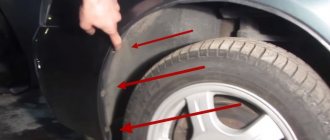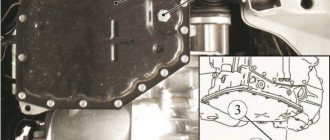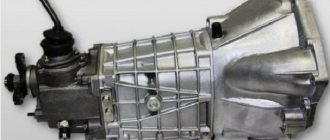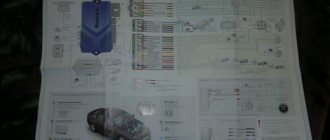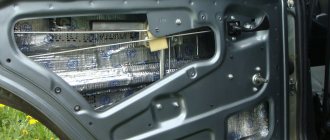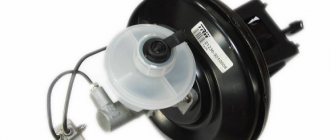Installing an automatic transmission on a Priora is the dream of many prior drivers, because the standard VAZ 2182 robotic transmission (or AMT) installed on this car is not very convenient to use, and is noticeably inferior in reliability to a traditional hydraulic automatic transmission. In addition, even a serviceable AMT often twitches, and its thoughtfulness when starting to move has already become legendary
Next, we will look at all the advantages and disadvantages of installing a full-fledged automatic transmission on the Lada Priora, and also tell you:
- how to install an automatic on a Priora;
- how much such work will cost;
- what kind of automatic transmission can be installed.
It is important to consider how to legitimize such a change in the traffic police.
What kind of checkpoints are there on the Priora?
Over all the years of production, Lada Priora was equipped with the following transmissions:
- mechanical (manual transmission) rocker 2170 and 2180;
- mechanical cable 2181;
- robotic 2812 based on manual transmission 2181.
Gearbox VAZ 2181
All units are manufactured at the technical facilities of AvtoVAZ using domestic and imported components.
Automatic or manual: is it worth the candle?
Arguing about tastes is like draining the Pacific Ocean. Useless and ridiculous. When it comes to replacing a manual transmission with an automatic transmission, the only “profit” of such changes that comes to mind is comfortable city driving. In summer midday traffic jams, the driver rarely leaves the manual transmission lever alone, every now and then mocking the clutch pedal. With automatics it’s easier: press the gas and go, press harder and go faster. That's all with the advantages of automatic transmissions.
Now about the sad “cons”. Automatic gearboxes (automatic transmissions), unlike their mechanical competitors, are structurally complex and demanding in terms of operating conditions. In addition to expensive maintenance and repairs, the owner is faced with a whole list of “don’ts”:
Surprises are in store for fuel consumption and acceleration dynamics: the first promises to increase, the second - on the contrary.
Is it possible to install an automatic transmission on a Priora?
This issue must be considered from the following angles:
- is it technically possible to install an automatic transmission;
- why they refused to install such a transmission at the factory;
- are there automatic transmissions compatible with the Lada Priora?
- whether such an installation would be legal and whether it would lead to problems with the traffic police and the insurance company.
Technically, installing an automatic transmission on a Priora is not difficult, because you don’t have to redo the body and engine, and replacing parts of the electrical system, including the ECU firmware and a number of parts of the gear selection mechanism, will not cause any difficulties for any experienced technician.
The only reason why AvtoVAZ refused to install a hydraulic automatic transmission was the rather high cost of the unit, because this automaker does not have its own automatic transmission, so it is necessary to use products from other companies.
The only supplier of automatic transmissions for AvtoVAZ is the Japanese company Jatco, owned by Nissan. Considering that the Russian auto giant is a subsidiary of the French Renault and more than half of the shares belong to the Renault-Nissan alliance, it was logical to install automatic transmissions of its own production on all Ladas. However, even in this case, the cost of a hydraulic automatic transmission is 90 thousand rubles, so only AMT (60 thousand rubles) and manual transmission (25–30 thousand rubles) were installed on the Priora.
The Jatco JF414E automatic transmission is fully compatible with both the body and all power units of the Lada Priora, so when installing it you won’t have to cut or overcook anything. However, installing such a transmission instead of a manual transmission or a robot is a change in the design of the car, so it can only be done after obtaining permission from the traffic police. Such permission is a formality, but to obtain it you will need to contact technical experts, because without their positive verdict you will not sign an application to change the design at the traffic police.
In addition, after installing a new unit, it is necessary to obtain a technical examination report on the safety of the vehicle design with the changes made to it, then undergo a technical inspection and re-issue documents for the car with the traffic police and the insurance company. You cannot drive a car without this, therefore, in addition to a fine and seizure of the car, you may also face cancellation of your insurance.
Car acceleration
Acceleration of the car is accompanied by the monotonous sound of the engine running at the same speed, which causes the feeling of a burnt out clutch. That is why, for some, this causes hostility towards CVTs. But the CVT VAZ is free of this drawback. Up to 3000 rpm, even with the gas pedal fully pressed, the engine spins up almost synchronously with the acceleration. It feels like acceleration occurs in one, smoothly increasing gear. And after overcoming this milestone, a sudden increase in revolutions occurs, which is accompanied by a noticeable increase in acceleration - as if a classic stepped automatic transmission was under the hood and the Kick-down mode was activated. To install the CVT on the VAZ, one of the mounting points of the internal combustion engine had to be moved to the body.
Despite this, vibrations have become noticeably less. If with a “mechanics” the engine skips at the moment of starting, which causes shaking, then with a variator this effect is noticeable to a much lesser extent. The speed is maintained automatically and drops less frequently into the “critical” zone.
Which automatic transmissions are suitable
The most suitable transmission, the installation of which does not require any major modifications, is the Jatco JF414E - a good four-speed hydraulic automatic transmission of a somewhat outdated design, but not without reason it is classified as an indestructible automatic transmission. The Jatco JF414E automatic transmission, which appeared in 2010, is a modified RE4F03A transmission from 1989, so the automatic transmission retains all the best features of classic hydraulic automatic transmissions.
Automatic transmission Jatco JF414E
If for some reason the Jatco JF414E is not suitable or is not available, pay attention to all automatic transmissions of front-wheel drive cars with an engine capacity of up to 1.8 liters and a power of up to 120 hp. With. However, when installing such boxes, 2 serious problems will arise:
- Rework of the engine and body will be required;
- It is impossible to officially legitimize such alterations.
If you go the unofficial route, there is a high risk of finding yourself accused of bribery, which carries serious prison terms.
Peculiarities
The design of the unit allows, during acceleration (pedal to the floor), to constantly maintain engine speed corresponding to maximum power, and the speed is gained by smoothly, steplessly changing the gear ratio. And with any manual transmission, the engine is forced to operate more often in less favorable transient conditions. Therefore, theoretically, a car with a CVT can accelerate faster than with a manual transmission.
To prevent sudden braking on the drive wheels from causing a skid on a slippery road, use speed braking. On a manual transmission this process is known to everyone, but on a CVT it has some peculiarities.
In Drive mode, the variator perceives the released gas pedal as a signal to shift to the highest gear, so the car practically does not brake with the engine. But if you switch to Low mode, everything changes. The CVT shifts to slightly higher gear ratios (“low gears”) and continues to hold them when the throttle is released, helping to increase engine braking efficiency. Thus, if you move the lever from “D” to “L” right on the move, engine braking will begin very smoothly and with a noticeable delay. The well-known transmission company ZF bought one of the Van Doorne Transmissie enterprises in Belgium and began producing CVTs by order of BMW for Rover and MG cars, and then for the new Mini.
How to install an automatic transmission on a Priora
In this section we will show the general principle of the actions necessary to replace a mechanical or robotic transmission with a hydraulic automatic transmission. This is caused both by different combinations of Lada Priora bodies, engines and transmissions, and by the fact that the most suitable Jatco JF414E automatic transmission is not always available and another unit has to be installed.
In addition, we will not detail the procedure required to obtain permission to make changes to the design of a vehicle, because the requirements depend on the region and the participation of intermediary companies in this process. Often, articles about Lada Priora with automatic transmission provide information that such a replacement is not difficult, just contact the appropriate office, but they are silent that the cost of such a service is comparable to the price of the car. Technically, installing an automatic machine on a Priora does not cause any difficulties even for a not very experienced technician, so the main costs fall on the purchase of the unit and making changes to the documents for the car.
Removing a manual or manual transmission
In order to remove the old transmission, you will need a pit, overpass, or lift. If none of the above is available, then you can get by with a jack and two safety stands. This is necessary because some of the work will have to be done from under the car, and you will also have to remove the transmission by lowering it to the floor or ground. In addition, you will need various tools, including a steering pin puller, without which you will not be able to properly disconnect the tie rods from the steering knuckle. Telescopic hydraulic struts are also extremely necessary, which can be replaced with a jack or traverse.
For an experienced technician, dismantling the gearbox takes 20–30 minutes, but if you do not have such qualifications, then you can spend half a day or more with this work. The main difficulties when dismantling the unit are securely hanging the car and pulling it out and then lowering the gearbox to the floor or ground. If the car is not hung securely enough, then any movement can cause it to fall, and it is good if you are not under it at this moment, otherwise there is a high risk of serious damage and death.
Telescopic transmission hydraulic stand
Pulling a box weighing 35 kg from its place, holding it with half-extended arms strictly in a straight line, without allowing even a slight deviation, is physically difficult, so if you do not have a hydraulic telescopic stand on wheels, you will have to call a strong assistant. This procedure will become even more complicated if you hang the car on jacks and safety supports, because you will have to drag the unit while lying on the ground.
If these difficulties do not scare you, then consider a more detailed description of the method for removing the Priora gearbox.
Selecting an automatic transmission
If you decide to install a JF414E from Jatco, then there will be no major modifications other than replacing the wiring and installing a new gear selector. If the choice fell on another automatic transmission, then most likely, before installing it, you will have to make an adapter plate from aluminum, because the mounting points of the power unit and transmission are in different places. Such a plate must fully correspond to the seats of both the engine and the gearbox, but for the engine it will replace the transmission, and for the automatic transmission it will replace the power unit. It is extremely difficult to make it at home, so you will have to contact a good milling machine or other specialist.
Such specialists, as well as various organizations, often give advertisements like “we are installing an automatic machine on the Priora,” but it is not easy to find out which of them does really high-quality work. It is advisable that the unit be supplied and installed by one organization, then in the event of any breakdowns it will be possible to file a claim with them, otherwise the sellers will nod at the installers, and they will point at the sellers.
Installation
To install an automatic transmission on a Priora, you must perform all the same steps as when removing it, but in reverse order. Here you will also have to face difficulties, because the input shaft of the gearbox is equipped with splines that must coincide with the splines of the hole in the flywheel, that is, there is a high probability that the input shaft will have to be turned by several degrees. This can be done either by rotating the shaft itself or by inserting an unnecessary internal CV joint instead of one of the differential plugs. In any case, it is quite difficult to do this without a stand, given the large weight of the unit, although a traverse or a rolling jack can significantly facilitate it.
Removing and installing the gearbox
In addition, after installing the hydraulic automatic, you will have to assemble the suspension, ensuring that each nut is tightened to the required torque, so you cannot do without the Lada Priora operation and repair manual, which can be purchased in paper or downloaded electronically.
Replacing wiring
To adapt the automatic transmission to work on the Lada Priora, you will need to install wiring to the transmission and the units interacting with it. Since automatic transmissions have never been combined with the engines that were installed on the Lada Priora, the standard scythes from Kalina, Grants or other cars equipped with a Zhatkov hydraulic automatic transmission will only fit after alteration, which can only be performed by a qualified auto electrician. Trying to make a braid yourself will only lead to the fact that you will damage the transmission ECU or some other electronic elements of the car, after which you will have to spend money on restoring or replacing them.
Installation of additional equipment
Additional equipment, without which it is impossible to install an automatic transmission on a Priora, includes:
- electronic gas pedal and electronic throttle;
- dashboard;
- Automatic transmission ECU;
- Engine ECU.
The electronic gas pedal, as well as the electronic throttle, began to be installed on this car in 2011, so it is not available on earlier models. Without these components, it is impossible to achieve normal operation of an automatic transmission, because its control unit is guided, among other things, by signals from the electronic pedal.
The instrument panel of a regular Priora does not have the indicators necessary for normal operation of the automatic transmission, so you can either replace it entirely with the same panel from Kalina or Granta, or embed the required indicators into it.
The ECUs of any engines that were installed on the Priora are not suitable for working with automatic transmissions, so you will have to install a control unit from a Grantov or Kalinovsky engine, and then look for firmware that will ensure the correct operation of the power unit and will not conflict with the automatic transmission ECU. However, there are craftsmen who adapt even the engine ECU from the first generation Lada Priora to work with automatic transmissions, but it is very difficult to find such craftsmen who can not only adapt the control unit, but also do it efficiently and therefore reliably.
ECU automatic transmission "Lada Grants"
The automatic transmission and engine ECUs can be taken from any Granta or Kalina equipped with a hydraulic automatic transmission. The least amount of effort will have to be put in when installing the control unit from a VAZ 21126 Kalina or Granta engine to the same Priora engine. But, in any case, after installing both control units, they will have to change the firmware, which can only be done by a qualified auto electrician or electronics engineer.
Registration of changes with the traffic police and the insurance company
This is one of the most difficult stages of the entire process of installing an automatic transmission, because it is necessary to obtain not only permission to install an automatic transmission on the Priora, but also an opinion from experts who will confirm the admissibility of such a modification. After installing the transmission, you will have to contact the experts again to get a safety protocol from them. If you installed a non-standard transmission, then such a protocol can be quite expensive, because the expert who issued it to a car with a non-standard transmission will have to take serious risks.
In particularly difficult cases, one expert may refuse to issue a protocol, and another will require a “thank you” with four zeros in European or American currency for issuing it. And without a protocol, it is impossible to officially legitimize changes to the car, so driving it on the streets will be a violation of the law, and any accident may result in serious financial losses.
Registration of changes in the car
And even after receiving the safety protocol in your hands, your torment will not end, because now the inspector on the inspection platform can begin to find fault, especially if a non-standard gearbox is installed, and the adapter plate protrudes somewhere beyond the contours of the engine or automatic transmission. After this, you need to contact the insurance company so that they make a change in their database. Only after completing all these procedures can you drive your car onto public roads.
Let's sum it up
Russian developments in the field of automatic transmissions have become one of the best options for technical progress that we could expect from AvtoVAZ. The company received a big push forward when other cars on the market began to rise in price. Today VAZs have truly become the most attractive offerings in terms of price and technology. But we can safely say that in technical terms, the cars are not inferior to their budget rivals from other countries.
Granta, Kalina and Vesta with automatic transmission, as well as Priora and the planned AvtoVAZ models, received excellent reviews from buyers and became targets for purchase from many potential motorists. The flow of investments into the company is increasing today, sales of new cars also continue to grow, so we can safely say that the concern will be able to continue to develop and grow well in the future. Do you think the automatic transmission options installed on the VAZ are reliable?
Is it worth it?
The Lada Priora has been out of production for 2 years now, and the first model appeared back in 2007, so the cost of a relatively new car exceeds 350 thousand rubles, and a ten-year-old Priora in good condition can be sold for 200–300 thousand. If we add to this the costs of purchasing parts, re-equipment and paperwork, without which it is impossible to install an automatic transmission on a Priora, then the total cost will increase by 1.5–2 times and it will not be possible to sell such a car without serious losses.
Therefore, installing an automatic transmission is justified only if the car is dear to the owner not only as a means of transportation, but also as some kind of symbol. If you decide to install a machine gun on the Priora yourself, then, in addition to purely technical issues, you will have to independently comply with the requirements of Russian legislation and interact with the traffic police and other structures, which does not add to your moral and mental health. That is why most of those who want to carry out such an upgrade agree to overpay 20-50 thousand to the intermediary so that he takes care of all the paperwork.
If this is just a means of transportation, then by selling your car and adding 50-100 thousand, you can buy a car in the same condition, but noticeably better equipped and without any problems with documents.
Tuning the VAZ 2109 transmission
The classic transmission of all VAZs is manual. It is quite reliable, cheap to maintain and well suited for use on domestic roads.
Upgraded car
There are several popular types of tuning for manual transmissions. They appeared as a banal need to improve the performance of the car. The main work packages include:
Let's take a closer look at one of the tuning options. Replacing the rocker with a short-throw one is a useful tuning that will significantly simplify gear shifting. We all know that the lever of the “nine” and most other VAZ cars is absolutely inconvenient. It has a huge backlash, which simply has a terrible effect on the accuracy of gear shifting. If men with long hands can still cope with it without any critical effort, then women will have a very difficult time with it.
The easiest way out of the situation is to install a short-stroke cardan from the Lada Kalina on the 2109. Such tuning will cost you approximately 1,500 rubles. Along with the cardan, you will have to get a boot from the same model, because it won’t be original with it.
The necessary tools for work are a set of keys, a slotted screwdriver and a hammer. It will also be very good to have an assistant.
Reviews of Priora with automatic transmission
You can often find articles on the Internet about Lada Priora with automatic transmission, in which owners talk about the wonderful transformation of their car, but the point is that Priora with AMT is not much inferior to such crafts, and to buy it you don’t have to go through a whole series of difficult shocks. In addition, even the most powerful engine of this car is enough for a quiet ride around the city or on the highway, but if there is a need to overtake not a single passenger car, but something larger, then 106 hp. With. To perform the maneuver comfortably is not enough, and no automatic transmission will change this.
Vehicle characteristics with manual transmission and automatic transmission (CVT) comparison
If we talk about the characteristics and performance of two cars of the tenth family, with a CVT and a manual transmission, then: Acceleration to 100 km/h - there is no difference in time. Acceleration at 400 m - the CVT wins by 0.2 seconds. Acceleration at 1000 m - the CVT wins by 1.1 seconds. Acceleration from 60 to 100 km/h (manual transmission - 3rd gear, CVT - “D”) - again the CVT wins by 1, 25 seconds. Maximum speed - here the “mechanics” turned out to be faster by 4.2 seconds. Fuel consumption - tests have not been carried out, but theoretically the CVT should reduce gasoline consumption.
If you find an error, please select a piece of text and press Ctrl+Enter.
Source
Problems with the traffic police and insurance: truth or fiction
Installing an automatic transmission on a Granta instead of a manual transmission is a design change that affects safety. Such conversion is registered with the traffic police. True, the process itself is more reminiscent of the movie “Santa Barbara”:
In a word, it’s not a conversion from a manual transmission to an automatic transmission on the Lada Grant, but a multi-episode soap opera.
In fact, 9 out of 10 motorists refuse to play these games: they drive until the next re-registration. And then maybe it will blow by.
Secret conversions on the Lada Grant - installing an automatic transmission, for example - no, no, they will play a cruel joke on the owner. A harmless minor accident with the occurrence of an insured event will reveal design changes in the car. In the future, they will become a powerful argument for refusing to pay insurance.
Perhaps it will happen here too: violate, violate!
Source
Hydraulic automatic machine or robot: light at the end of the tunnel
Fluid mechanics has won the sympathy of the automotive world. “Colleague in the shop” - a robotic gearbox (manual gearbox, or simply a robot), is desperately striving for the podium. And it’s not in vain that it breaks.
The robot is also called a semi-automatic transmission. In fact, this is the same mechanics, where the desired gear is engaged without driver intervention, with the help of special devices - actuators. External sensors record the load on the engine, vehicle speed, accelerator pedal position, wheel slip and transmit the parameters to the electronic control unit (ECU).
Alas, robotic gearboxes with a single clutch suffer from jerky movements and slow shifts. These disadvantages are absent in a car with a preselective manual transmission (modification with two clutches).
Advantages of a robot over a hydraulic automatic machine:
Which transmission to choose is up to everyone to decide for themselves. The Japanese, for example, abandoned the robot in favor of a hydromechanical gearbox on the 2007 Toyota Corolla model. Honda did the same: the restyled Civic 8 received a full-fledged automatic transmission.
Lightweight used versus new: the eternal debate
Installing an automatic machine on a Granta requires serious expenses: experts estimate such modifications to cost half the car. Everyone who is not afraid to empty their pockets and is ready to move on will face a serious question: which box to buy.
The budget, already overspend, requires a saving regime. Here you will get a machine gun for 40-45 thousand “wooden”, from disassembly. True, the consequences of such frugality are vague: the former owner probably hid half of the “adventures” of the well-worn unit.
